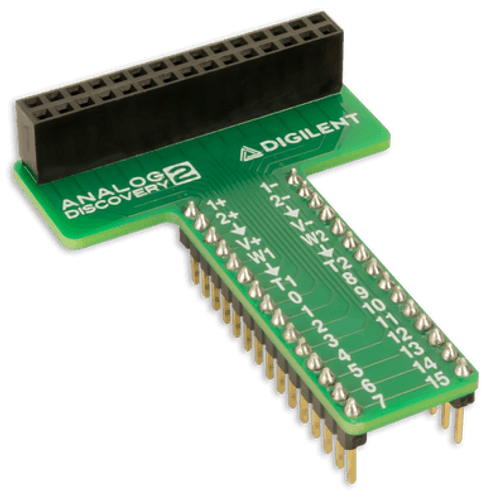One of the 12 instruments of the Analog Discovery is the Impedance Analyzer instrument, which allows the user to analyze inductive and capacitive elements of a circuit under test. The Impedance Analyzer for Analog Discovery provides automatically adjusting reference resistors and relays, so that reference circuits don't have to be manually built for each test.
When plugged into the Analog Discovery, and connected to WaveForms the Analog Discovery will automatically select the most appropriate configuration for the attached unknown impedance. The adapter is loaded with a 2x15 female connector which can be plugged in directly to the Analog Discovery. Components or leads can be attached via the spring terminal block on the Impedance Analyzer.
Note: Use of this adapter requires WaveForms version 3.8.2 or later.
- 2-wire Impedance Analyzer integrates with the Impedance Analyzer instrument in WaveForms
- 50pF - 500µF Capacitance Measurement Range
- 10µH - 1000mH Inductance Measurement Range
- 1Hz - 15MHz Excitation Frequency Range
- 2x15 female header for connection to the Analog Discovery
- Two pin Spring Terminal Block for connection to the circuit under test
- Product Compliance:
- HTC: 8473301180
- ECCN: EAR99
- Analog Discovery Impedance Analyzer
- Custom Anti-Static Packaging
The resource center for the Impedance Analyzer is the central hub of technical content for the device, and contains everything to get started and reduce mean time to test. This includes a getting started guide, documentation, tutorials, example projects and a link to technical support.
Resource Center








